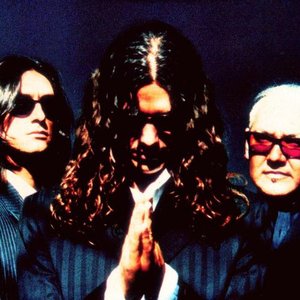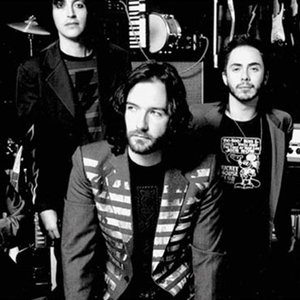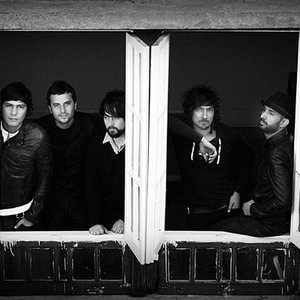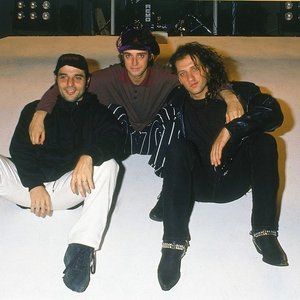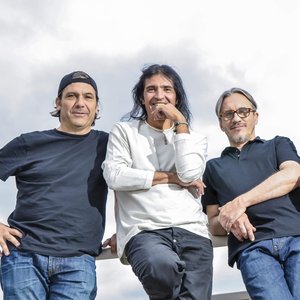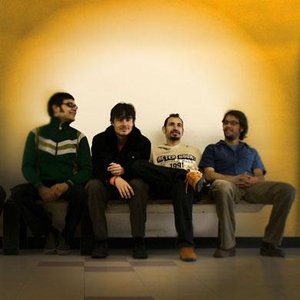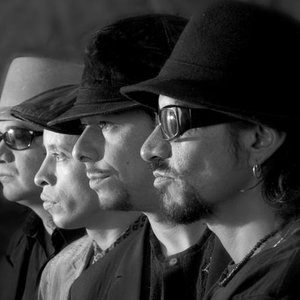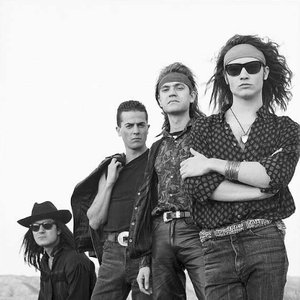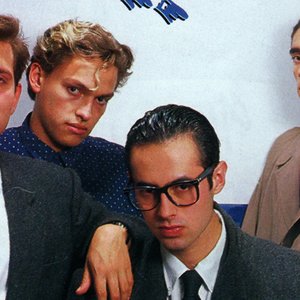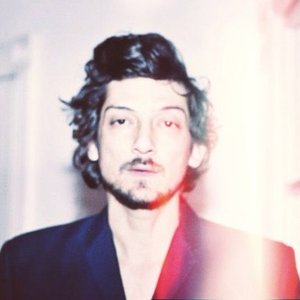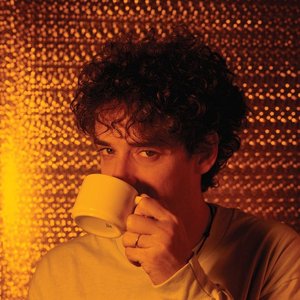Biografia
-
Anni di attività
1987 – oggi (37 anni)
-
Luogo di fondazione
Ciudad de México, Messico
-
Componenti
- Alejandro Marcovich (1989 – 2014)
- Alfonso André (1987 – 1995)
- Diego Herrera (1987 – 1993)
- Sabo Romo (1987 – 1993)
- Santiago Ojeda
Rock group Caifanes from Mexico are pioneers of the revival of Spanish-language rock (Rock en Español) in Mexico in the mid to late 1980s. Their musical approach clashed with the then dominating ballads and happy pop tunes that filled the radio and TV programs, in offering dark and moody lyrics.
Line-up
The first Caifanes lineup consisted of Saúl Hernández (vocals & guitar), Sabo Romo (bass guitar), Alfonso André (drums) and Diego Herrera (keyboards and saxophone). Late in 1989, a new member (who had previously played in a band with Hernández and André), Alejandro Marcovich (lead guitar), was recruited. A power struggle between and Marcovich and Hernández later led to Caifanes' break up.
Other members (guest musicians): Jesus "Chucho" Merchan (bass), Federico Fong (bass), Jose Manuel Aguilera (guitar), Stuart Hamm (bass), Gustavo Cerati (guitar), Adrian Belew (guitar), Yann Zaragoza (keyboards) and Cecilia Toussaint (backing vocals), Leo (percussion).
History
Their first live show was April 11, 1987, in Rockotitlan, a famous rock venue in Mexico City. The expectation created by Mexico City's underground rock scene was so immense that the building was filled to capacity and people were left outside. Even though Caifanes was a new group with bass player and producer Sabo Romo and Diego Herrera on keyboards and sax. Saul, Alfonso, and Alejandro Marcovich had already played in a band (Las Insolitas Imagenes de Aurora) that had a legion of fans.
Their first disc, the self-titled Caifanes (also known as Mátenme porque me muero, Volumen I, or the Black Disc) went on sale in August 1988 and the single "Mátenme porque me muero" ("Kill me because I'm dying") was their first hit, which was then followed by "Viento" and "La negra Tomasa" (the latter a cover of the cumbia written by the Cuban musician Guillermo Rodriguez Fiffe). The disc showed clear influences of the British band The Cure. Gustavo Cerati of Soda Stereo was an invited musician playing the guitar in "La Bestia humana". The CD itself was preceded by an EP made up of three songs. This was in order to see if the targeted audience would accept the group. The immediate sale of 300,000 copies prompted the making of the full disc.
Their second disc was titled Volumen II (Volume II, but it is much better known as El Diablito (The Little Devil). This is due to the image of a devil, such as those found in the Mexican "Loteria" game that resembles bingo. In this disc we see the inclusion of Alejandro Marcovich to the group as the lead guitar. His presence results in a notorious change from the beginning and his style would be fundamental to what would be Caifane's trademark sound.
In Volumen II appears one of the most famous songs of the group, "La Célula que explota" (The Exploding Cell). This song is a hybrid of a rock ballad and a mariachi, and it points into the direction that Caifanes would take in terms of musical style – a mix of rock with elements of various forms that are found in the Mexican music scene.
In 1992, El Silencio (The Silence) was released. It was produced by Adrian Belew and includes many of Caifanes' biggest songs. "No dejes que…" ("Don't let"), "Miércoles de ceniza" ("Ash Wednesday"), "Nubes" ("Clouds"), and "Nos vamos juntos" ("We Leave Together") are found here, among many others. At this time the group was already a hit in Mexico, Central America, parts of South America and also among the Latino community of the United States. In August of that year, they played in front of a sold-out crowd at the Hollywood Palladium in Los Angeles and in 1993 they did the same in Mexico City's Palacio De Los Deportes, something that had never happened with a rock group. In that concert, Sabo Romo played his last show with the group. Diego Herrera would follow suit at the end of that tour.
At the end of the tour, Caifanes became a trio formed by Saul, Alfonso, and Alejandro. Federico Fong joined as a bass player and Yann Zaragoza played the keyboard. Together they made Caifanes' last disc, El nervio del volcán (The Volcano's Nerve). The singles to come out of this disc were "Afuera" ("Outside"), "Aquí no es así" ("Here It's Not Like That"), and "Ayer me dijo un ave" ("Yesterday A Bird Told Me)". At this point, their presence grew and the media followed the band very closely. They played an Unplugged show for MTV Latino (which was in fact not an acoustic concert). Their fame grows as they open for the Rolling Stones in Mexico City and participate in the WOMAD festival, organized by Peter Gabriel.
Caifanes ceased to be in 1995 due to Saúl Hernández and Alejandro Marcovich's creative and legal differences, most notably over the use of the name "Caifanes".
Discography
1. Caifanes (1988), aka Matenme porque me muero, Volumen 1
2. El diablito (1990), aka Volumen 2
3. El silencio (1992)
4. El nervio del volcán (1994)
5. La Historia (1997), (greatest hits compilation)
Le descrizioni degli artisti su Last.fm possono essere modificate da tutti. Il tuo contributo sarà apprezzato!
Tutti i contenuti forniti dagli utenti su questa pagina sono disponibili in base ai termini della licenza Creative Commons Attribution-ShareAlike; potrebbero essere applicati ulteriori termini.

